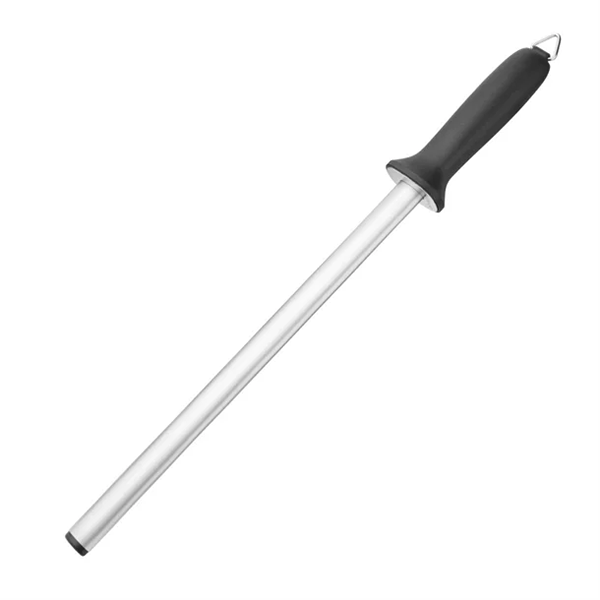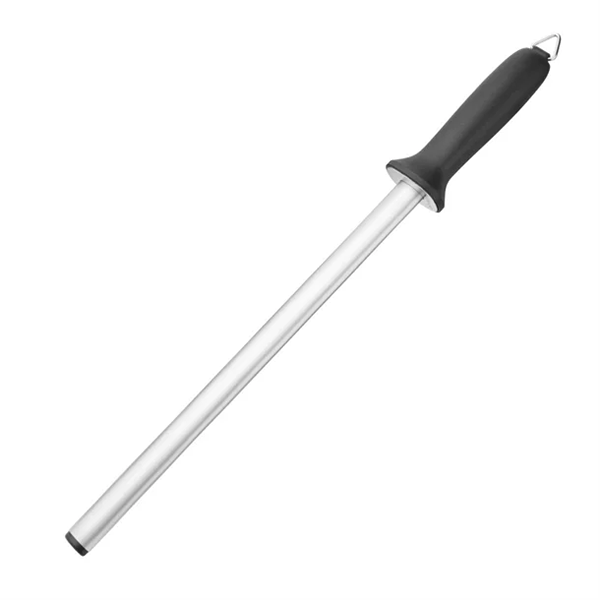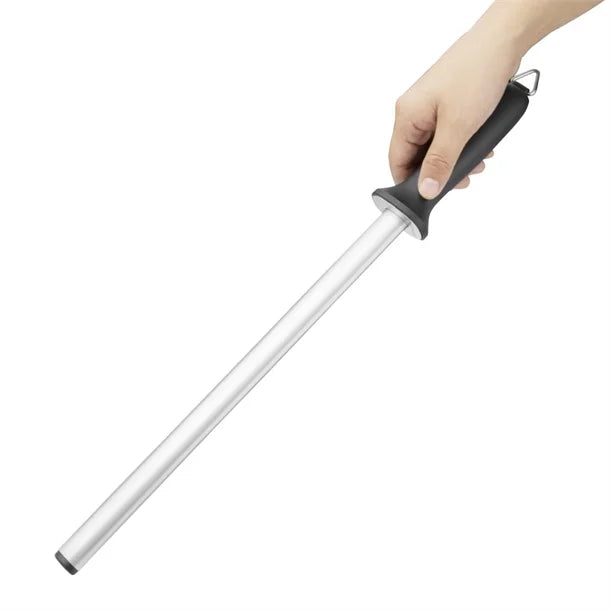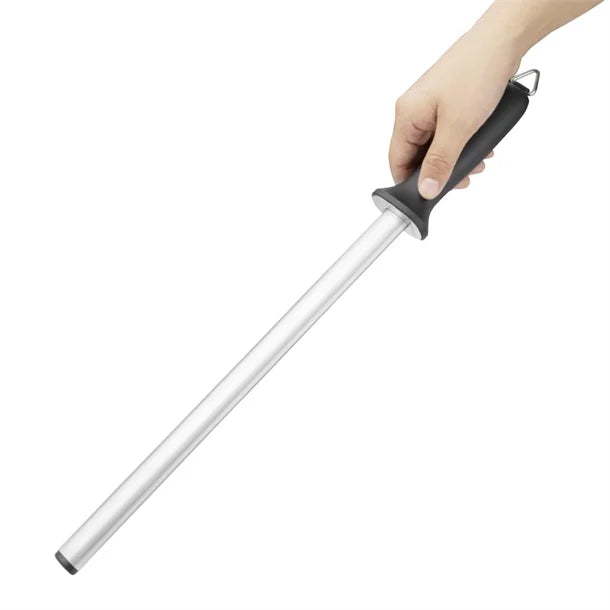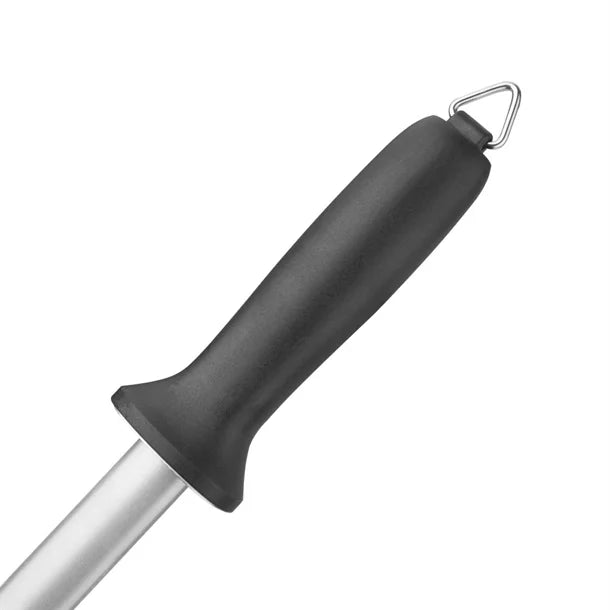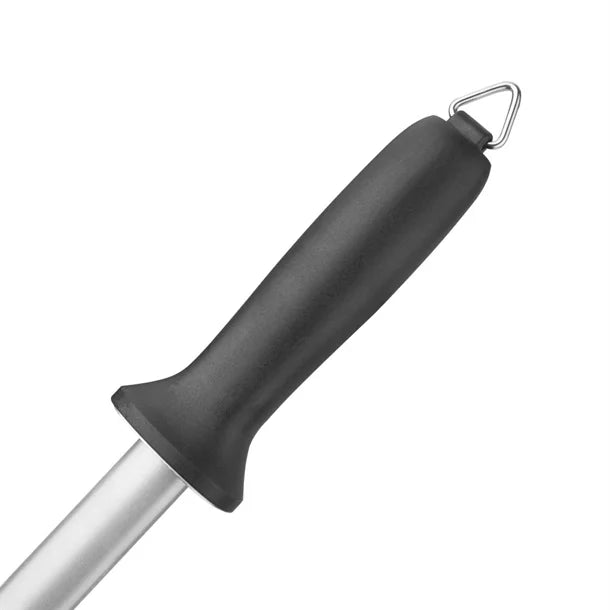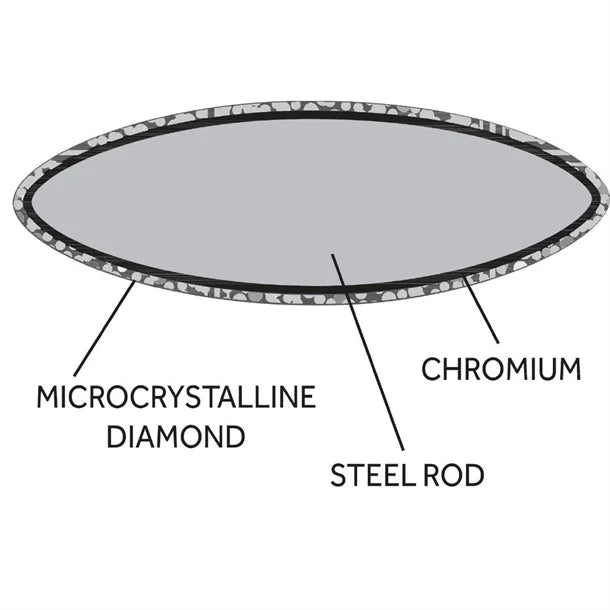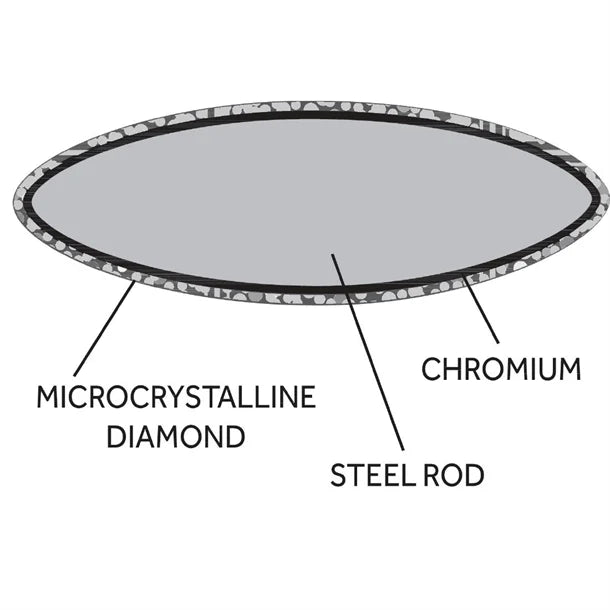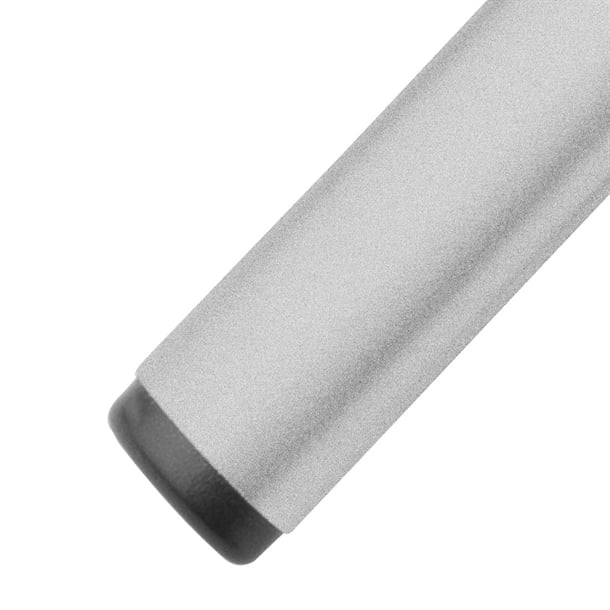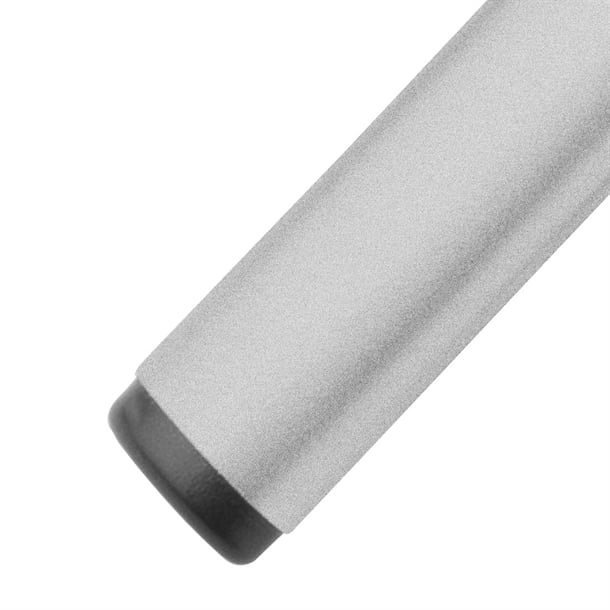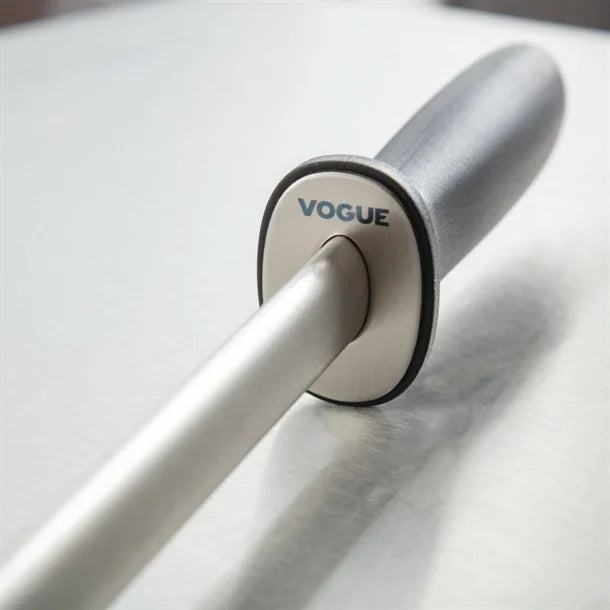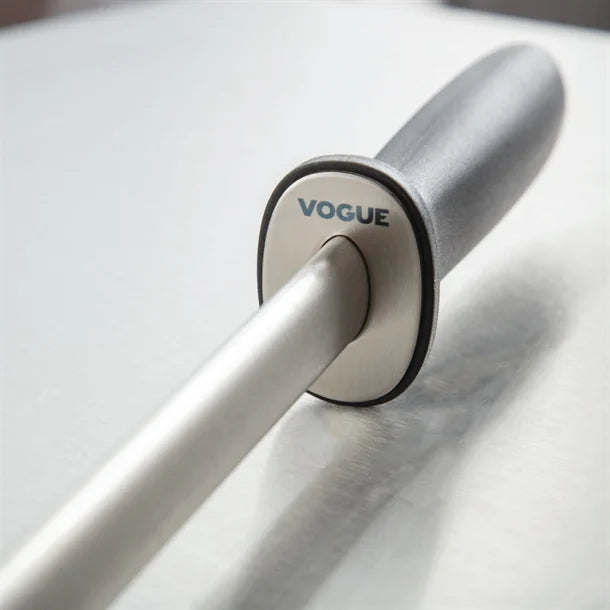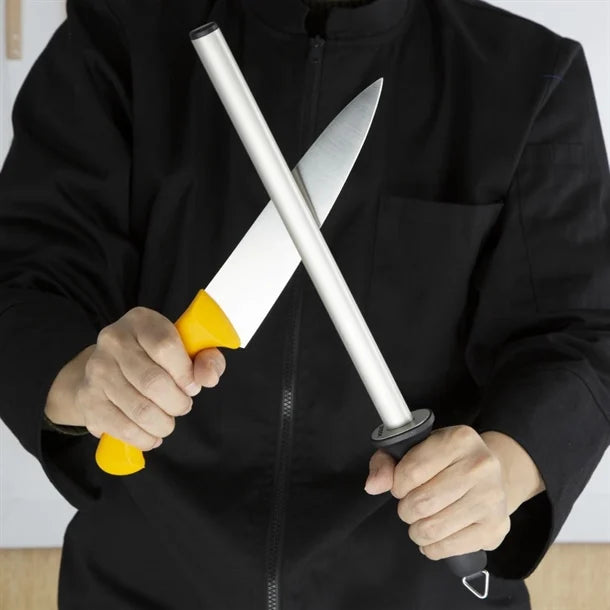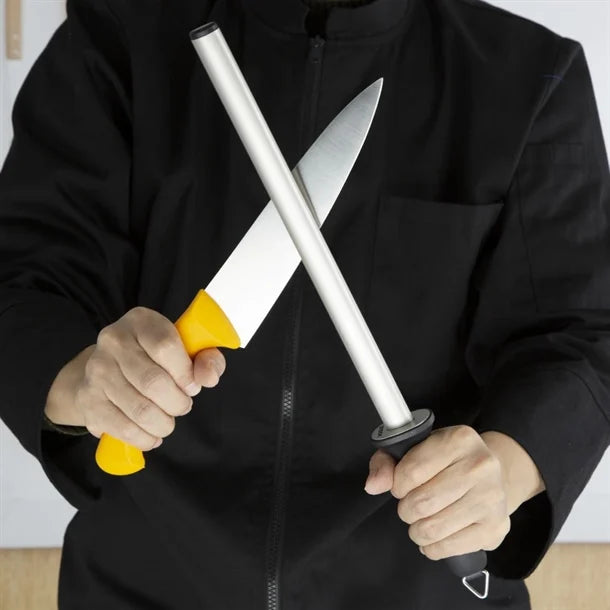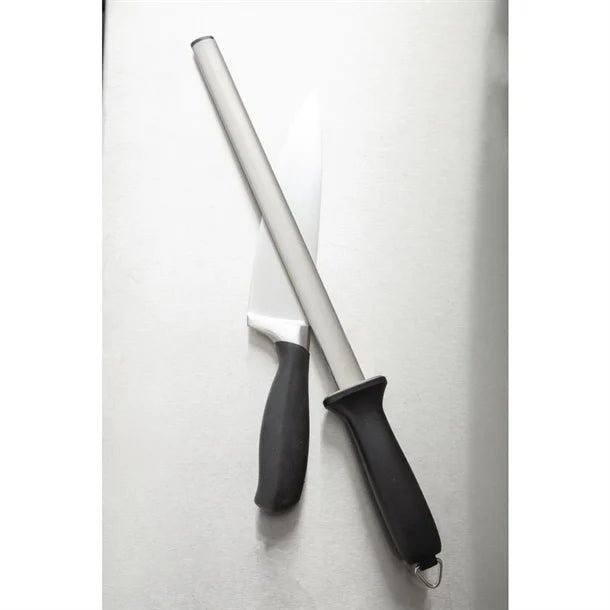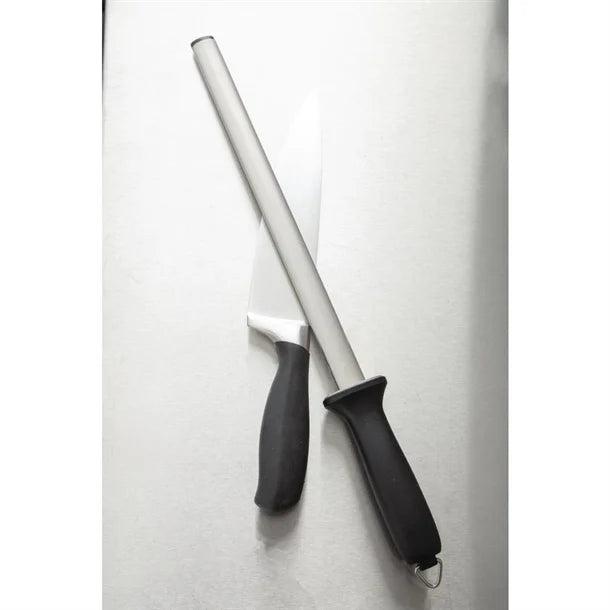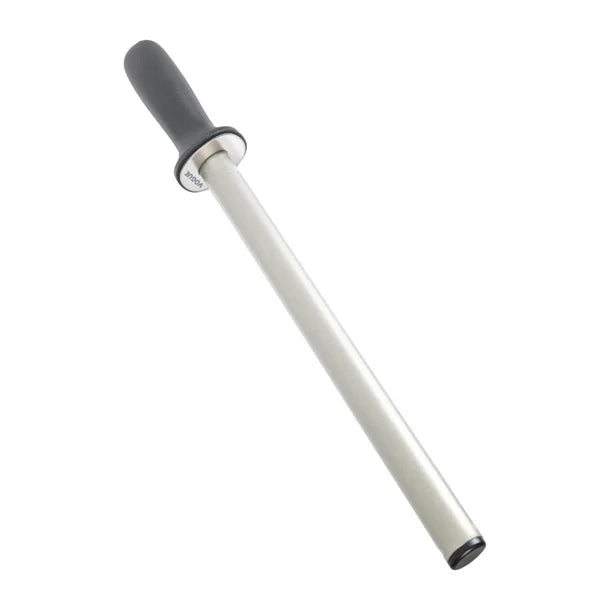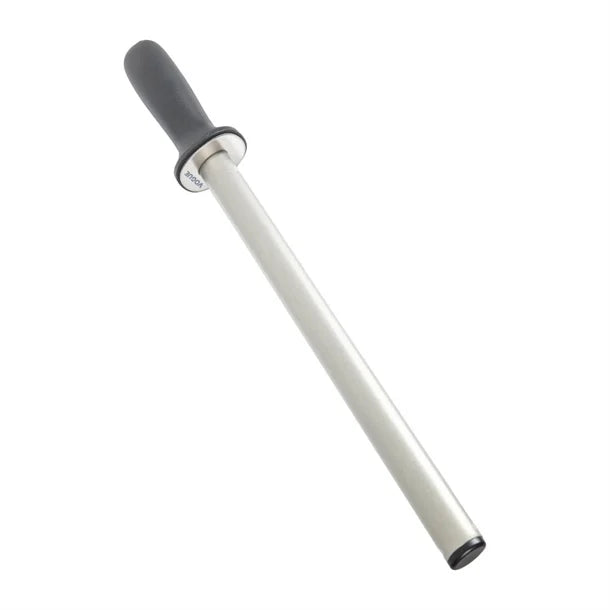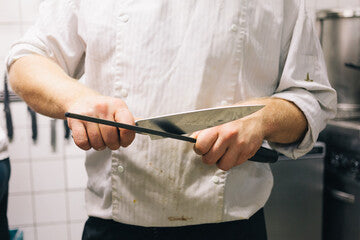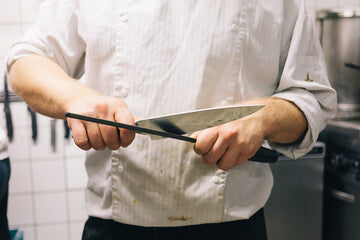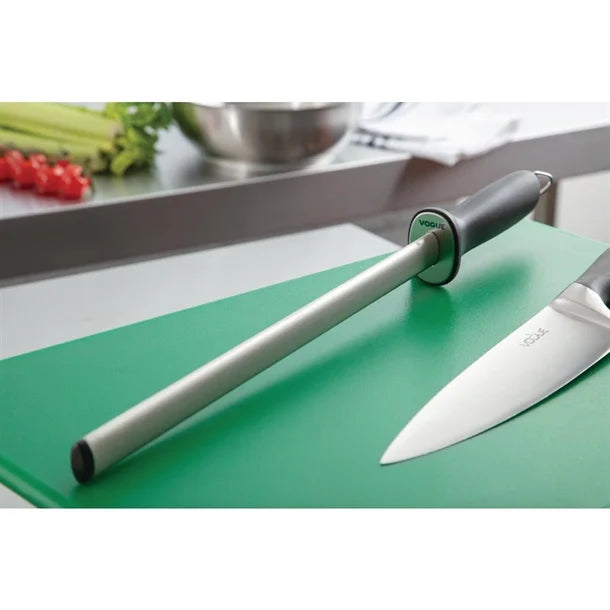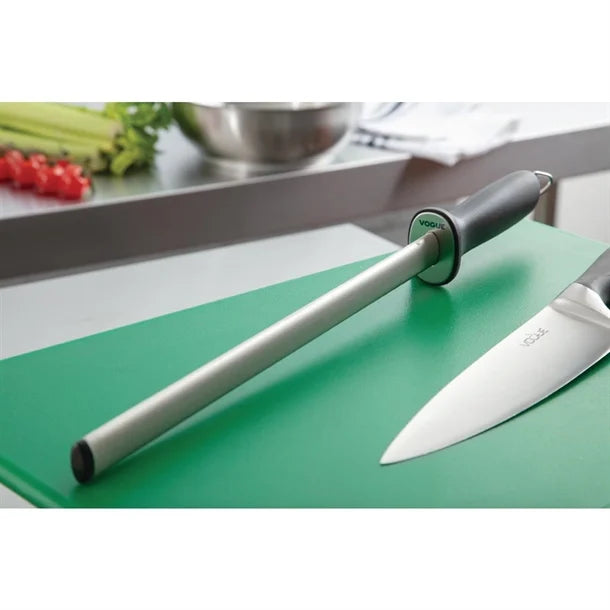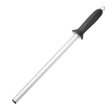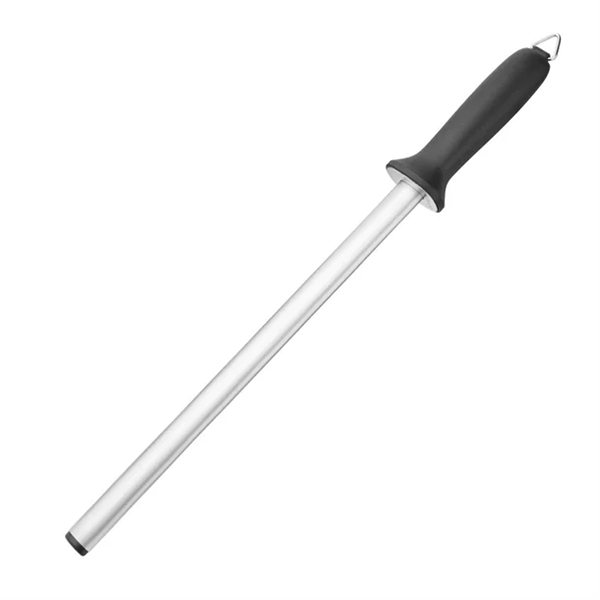Vogue D161 Diamond Knife Sharpening Steel 30.5cm
Vogue D161 Diamond Knife Sharpening Steel 30.5cm is backordered and will ship as soon as it is back in stock.
✅ Free Delivery on orders over £30 ex. VAT
✅ Fast Delivery usually within 48hrs
✅ 30-day money-back guarantee
✅ Order by 3 PM for same-day dispatch
Couldn't load pickup availability
Specifications
Specifications
Achieving the perfect cutting edge for your chef knives takes just a few strokes with this diamond sharpening steel from Vogue. But how? Its supreme performance is down to the microcrystalline diamond surface, which delivers far superior results for much less effort - once you've tried it, you'll never want to use your traditional steel again.
The 305mm diamond steel also features a comfortable handle design that feels safe and secure in your hand when gripped. It's designed with a hook on the end of the handle too - perfect for hanging storage, and keeping it in a convenient place so it's ready to grab whenever you need it.
A knife sharpener steel, often referred to as a honing steel or sharpening steel, is a tool used to maintain the sharpness of a knife's edge. While it doesn't actually grind or reshape the blade (like a traditional sharpener or whetstone), it is used to align the edge of the blade, ensuring it remains straight and effective. Over time, knives can develop small bends or imperfections on their edges, and using a steel helps correct those minor issues before the knife becomes dull.
Dimensions 12(L)"
Material Diamond Steel
Rockwell hardness rating99°
Weight 200g
Colour Black
Microcrystalline diamond surface guarantees superior sharpening results
Hook for hanging storage saves space and keeps steel within easy reach
Effortlessly sharpens blades with just a few strokes
Keeps knives in top condition to increase performance and reliability
Handle is comfortable to hold for a safe and secure grip
Next working day delivery (cut off time 1pm)
Delivery
Delivery
Returns
Returns
The customer will in the event of agree cancellation indemnify the Company in full against all expense and loss incurred up to the time of cancellation in accordance with the following formula namely:
The customer cancels after the Goods have left the Company's warehouse but before they have been unpacked by the customer a charge of Twenty percent (20%) of the invoice value will be charged plus any carriage charges incurred by the Company at the time of cancellation.
If the customer cancels after the Goods have left the Company's warehouse and the goods they have been unpacked by the customer a charge of Twenty Five percent (25%) of the invoice value will be charged plus any downgrading amount necessary together with any carriage charges incurred.
If we have sent the wrong product, which does not match the description on your invoice, you can return it to us for an exchange. We will refund the cost of postage where applicable.

